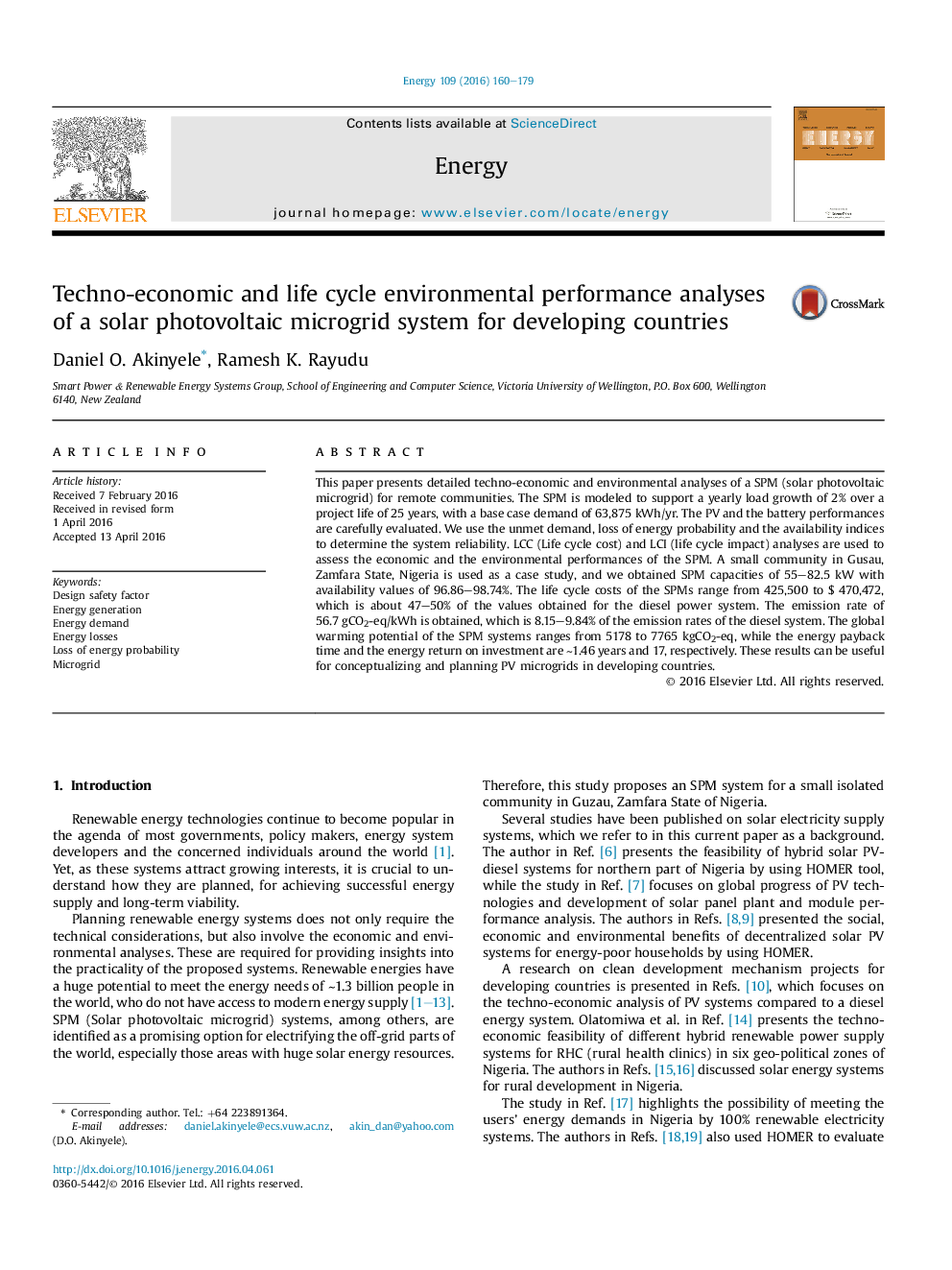| Article ID | Journal | Published Year | Pages | File Type |
|---|---|---|---|---|
| 8073431 | Energy | 2016 | 20 Pages |
Abstract
This paper presents detailed techno-economic and environmental analyses of a SPM (solar photovoltaic microgrid) for remote communities. The SPM is modeled to support a yearly load growth of 2% over a project life of 25 years, with a base case demand of 63,875Â kWh/yr. The PV and the battery performances are carefully evaluated. We use the unmet demand, loss of energy probability and the availability indices to determine the system reliability. LCC (Life cycle cost) and LCI (life cycle impact) analyses are used to assess the economic and the environmental performances of the SPM. A small community in Gusau, Zamfara State, Nigeria is used as a case study, and we obtained SPM capacities of 55-82.5Â kW with availability values of 96.86-98.74%. The life cycle costs of the SPMs range from 425,500 to $ 470,472, which is about 47-50% of the values obtained for the diesel power system. The emission rate of 56.7Â gCO2-eq/kWh is obtained, which is 8.15-9.84% of the emission rates of the diesel system. The global warming potential of the SPM systems ranges from 5178 to 7765Â kgCO2-eq, while the energy payback time and the energy return on investment are â¼1.46 years and 17, respectively. These results can be useful for conceptualizing and planning PV microgrids in developing countries.
Related Topics
Physical Sciences and Engineering
Energy
Energy (General)
Authors
Daniel O. Akinyele, Ramesh K. Rayudu,
